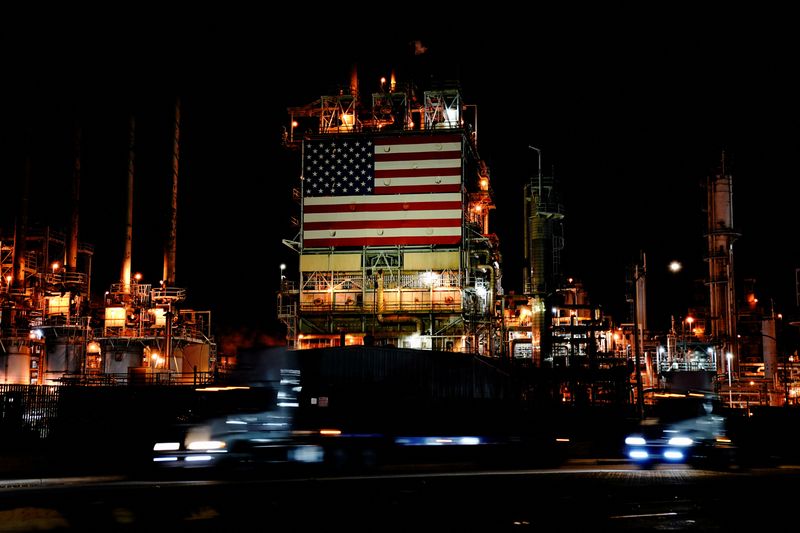By Laura Sanicola
(Reuters) - U.S. oil refiners are expected to report another quarter of lower earnings versus year-ago levels due to weaker fuel prices and after a proliferation of plant outages, analysts said.
Refining profits soared in 2022 after disruptions to global trade from Russia's invasion of Ukraine drove margins to record levels.
They began to normalize in 2023 on weaker economic activity and an increase in global refining capacity.
Further global supply disruptions and extended planned maintenance at U.S. plants, however, could see profits rebound in the first half of this year, analysts said.
While profits are down, refiners are still expected to end the quarter with $16 billion in excess cash, which they are likely to return to shareholders in the form of stock buybacks and dividends, Matthew Blair, a refining analyst at Tudor, Pickering, Holt & Co, wrote in a note.
"Investors will be razor-focused on any guidance on payout strategies for 2024," Blair said.
Houston-based Valero, the second-largest U.S. refiner by capacity, kicks off the fourth quarter earnings season on Thursday and is expected to make $2.97 per share profit, compared with $8.15 per share a year ago, according to LSEG data.
Top U.S. refiner Marathon Petroleum (NYSE:MPC)'s earnings per share are expected to be $2.21 each, a fraction of the $7.09 per share earned in the same quarter the prior year.
Fuel inventories have swelled, dragging down prices and refining margins. Gasoline stockpiles rose 5% to 237 million barrels in the fourth quarter, 1.7% above the 10-year seasonal average calculated by the U.S. Energy Information Administration (EIA).
Retail gasoline prices averaged $3.48 per gallon in the quarter, compared with $3.69 year on year, according to the EIA.
Distillate inventories, which include diesel and heating oil, rose 5% in the quarter, but remained slightly below the five-year seasonal average.
U.S. diesel futures' spread to crude oil , which reached record highs above $80 a barrel in the fourth quarter of 2022, weakened by about $20, largely affected by declines in industrial production.
Gasoline demand was seasonally weak in December. That led to the gasoline spread hitting below $8 in the quarter, half of the lowest level seen in the same quarter the prior year.
West Coast refineries, such as PBF Energy's Martinez and Marathon's Carson plants, also went down unexpectedly throughout the quarter, hurting their operators' profits.
Analysts are expecting PBF earnings profit of $0.11 per share, compared with $4.86 per share in the prior-year quarter.
BETTER Q1 OUTLOOK
Analysts at banks such as Mizuho and Tudor, Pickering, Holt & Co revised refiner earnings lower for the fourth quarter, but noted that gasoline and diesel futures are rising in the start of the year, indicating that prices could pick up in the first quarter.
U.S. fuelmakers are planning to shut units and plants for longer than usual for repairs during spring turnarounds, which could raise fuel prices and help margins, analysts at TD Cowen wrote in a note.

The hit from frigid weather this month that contributed to the shut-in of 1.5 million barrels per day of processing capacity at U.S. Gulf Coast refineries should be short-lived, according to a note from Wood Mackenzie. Still, there is a possibility this may lead to other glitches as refineries come back up.
Prices for distillate fuels could also rise in the quarter if Houthi attacks on vessels in the Red Sea disrupt the transportation of diesel and heating through the Suez Canal, which accounts for 15% of global waterborne distillate flows.